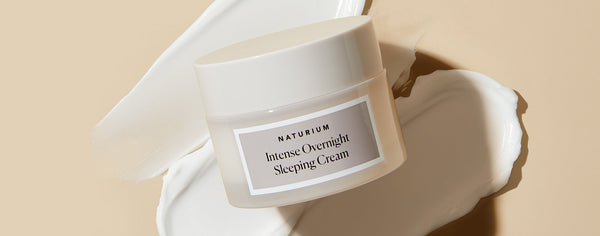Why You Need Squalane: A Scientific, Deep Dive on the Miracle Ingredient

One of our favorite ingredients is squalane. Whether it’s our pure 100% Plant Squalane Face Oil or used in one of our formulations, squalane is another great multi-benefit ingredient. The biocompatible material is known for its moisturizing qualities and has a unique sensorial texture and feel. Read more to take a deeper dive and learn more about one of our most utilized ingredients.
Squalene, a precursor to the formation of squalane, was originally harvested from shark liver oil. This is not only an environmental concern but a safety hazard as shark-derived squalene can contain environmental pollutants and heavy metals.1 Naturium squalane is derived from sustainably sourced sugarcane and is 100% bio-based. The sugarcane goes through biofermentation using the non-pathogenic yeast Saccharomyces cerevisae to produce Farnesene which goes through various reactions to produce squalane, bypassing the need to extract unstable squalene for hydrogenation. By pairing biotechnology with natural enzyme-catalyzed chemical reactions we obtain renewable, pure, and stable squalane with minimal impurities. 2 This technology offers the highest purity squalane possible compared to other sources resulting in highly stable and efficacious squalane.
Squalane is a highly branched hydrocarbon and the saturated and stable derivative of squalene. Squalene is a main component in skin surface lipids secreted from the sebaceous glands, accounting for 13% of sebum while squalane is present in small amounts. Both oils when applied topically are proven antioxidants, anti-inflammatory agents, detoxifiers, and skin hydrators working to prevent moisture loss, impart elasticity to the skin, and reduce wrinkles.
The amount of squalene drastically declines after the age of 30 resulting in increased dryness and the formation of wrinkles.3 However, squalene is a highly unstable molecule and prone to chemical oxidation and rancidity which reduces its effectiveness and therapeutic benefits when applied topically.4 Some of the oxidative by-products of squalene can cause comedogenesis, inflammation, hyperpigmentation, and wrinkling.5 Since squalane is saturated (does not contain any double or triple bonds between the carbons) it is physically and chemically stable offering better skin efficacy. Hydrogenation of squalene to squalane makes it a more skin-friendly biocompatible molecule while still preserving the skin benefits of squalene.
Since squalane is a small lipophilic molecule it is able to penetrate the lipid bilayers of the skin. Squalane is composed of 30 carbon atoms and 62 hydrogen atoms with a molecular weight of 422.5g/mol which is equivalent to 422.5 Daltons. This is significant as molecules greater than 500 Daltons cannot effectively pass the stratum corneum; therefore, squalane is within this threshold and penetrates the skin for true biological efficacy.6 Although it is lipophilic and considered an oil, it is noncomedogenic and biocompatible with all skin types.
Clinical results show topical squalane helps increases cell turnover, improves moisture and skin elasticity, helps reduce appearance of wrinkles and fine lines, and enhances skin barrier integrity. Topical squalane is biomimetic as it is a naturally occurring molecule in skin. This means that despite the source or origin of the squalane the skin readily integrates it into its lipid bilayers. Squalane also enhances transdermal delivery of active ingredients acting as a safe and effective skin penetration enhancer or absorption promoter.7 This is crucial as it improves the bioavailability of bioactives without the adverse effects of traditional absorption promoters such as propylene glycol and ethanol.

SOURCES:
- 1MM Storelli, E Ceci, A Storelli and GO Marcotrigiano, Polychlorinated biphenyl, heavy metal and methylmercury residues in hammerhead sharks: Contaminant status and assessment, Mar Pollut Bull 46 1035-1039 (200
- 2Deriving Renewable Squalane from Sugarcane Derek McPhee, PhD, Armelle Pin, Lance Kizer, PhD, and Loren Perelman, PhD Cosmetic and Toiletries magazine Vol. 129, No. 6 | July/August 2014
- 3https://www.ncbi.nlm.nih.gov/pmc/articles/PMC4885180/
- ...
- 4S-K Kim and F Karadeniz, Biological importance and applications of squalene and squalane, in Advances in Food and Nutrition Research, vol 65, S-K Kim, ed, Elsevier, Amsterdam, ch 14 (2012) pp 223-233
- 5https://www.nature.com/articles/s41598-018-27455-5
- 6https://www.ncbi.nlm.nih.gov/pubmed/10839713
- 7https://www.sciencedirect.com/science/article/pii/S000527360900296X





